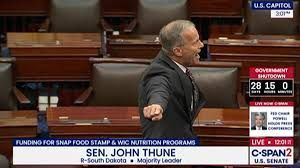Nib #70 Sell the Stakes
Most audiences don’t care about the technical details of whatever it is you’re advocating. They only want to know what’s in it for them. That’s why toothpaste commercials are short on hydrated silica, and long on whiter teeth and minty freshness.
Advertisers sum up this idea in the catchphrase, “Features tell, benefits sell.” In politics, this might be translated as “Sell the stakes.”
No one advocates for tax cuts because 25% is inherently better than 33%. No one promotes their idea for welfare reform based on the proposal’s elegant inter-jurisdictional design. Persuasive advocacy is always about how good the sausage tastes, not how cleverly it was made.
New jobs. Higher wages. Reduced poverty. Better schools and health care. Safer streets. Freedom, justice, security. These are the things most audiences care about.
That is why Martin Luther King’s “I Have a Dream” speech contains no draft legislative language for a future Civil Rights Act. Nor did Ronald Reagan’s Oval Office address after the Challenger disaster get into the details of reauthorizing NASA for the next fiscal year. No, King was pitching color-blind justice and racial harmony; Reagan was selling an undeterred national commitment to space exploration.
Don’t get me wrong. Policy details matter. They just aren’t persuasive to most audiences. Washington people, in particular, can be so immersed in policy that they forget other people are not. This is a crucial hurdle every speechwriter, activist, and staffer must overcome.
When writing a speech or memo or oped, remember to sell the stakes. Include a few paragraphs about how your proposal will change the future. What will happen — to your audience — if we implement the policies or strategies you espouse? What will happen if we don’t?
In traditional rhetorical structure, the Stakes typically comprise Part 3 — right after the background. So, when you’re done with your idea’s “Origin Story,” avoid the temptation to jump into the wonky details. Instead, pivot from the past tense to the future. Define and personalize the stakes of the debate — and then sell your audience on them.
Until next week… keep writing!











